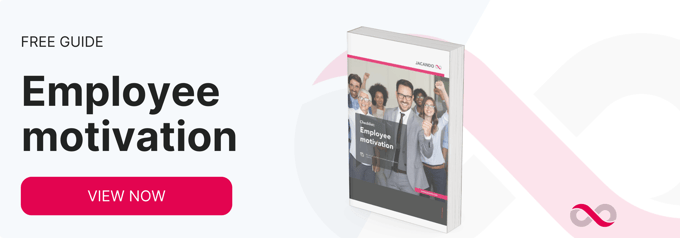In the battle for the most sought-after talents, it is particularly important for companies to present themselves as attractive employers. The attractiveness of a company can also be increased through employee benefits (also known as fringe benefits). If these benefits are chosen correctly, motivation and job satisfaction can definitely be increased, the work-life balance can be promoted and employees stay fit and healthy. In this way, companies also succeed in retaining their talents in the long term. But which corporate benefits are particularly well received by employees and what advantages do they bring to the employer?
In order to positively differentiate themselves from the competition, in times of a shortage of skilled workers and the "War for Talents" (for those with a fighting spirit), many companies entice employees with numerous employee benefits. A study by Kununu shows which benefits employees actually want. The search queries were analyzed in more detail and the best criteria were evaluated. Particularly popular among employees are flexible working hours, the opportunity to work in a home office and, surprisingly, also to bring the dog to the workplace.
Our survey also showed that 90% of employees do not want to do without flexible working hours. Other benefits, such as having their own desk, are rather unimportant to employees according to our survey. In general, it can be said that the general working atmosphere is more important to employees than material benefits.
Nevertheless, material benefits are of course always welcome. Even in salary negotiations, different salary expectations can usually be compensated for with benefits. For example, a company car, a train pass, an employee cell phone, free meals or meal allowances and employee discounts are the best-known classics.
Another classic is probably the best-known example of a company with many benefits: Google supports its Googlers in numerous areas, such as unlimited vacations, leisure programs and numerous training courses, as well as support for the family in every life situation. If you want to learn more about Google's benefits and their background, you can read about them in Lazlo Bock's book: Essential Lessons from Lazlo Bock in Work Rules.
However, many companies, such as SMEs, may not have the largest budget for employee benefits, but still want to show their appreciation to employees and present themselves as an attractive employer. For this purpose, we have also compiled some tips and examples, which can have a big effect despite low costs.
For example, even a small fruit basket at the start of work or birthday cards and cake can leave a lasting impression. Likewise, a company aperitif to spend time with colleagues outside the office is important and meaningful, not least to get to know the team better. An initiative like "bring your family to work days" is an original idea, on the one hand to give the loved ones an insight into the daily work routine and on the other hand to introduce and present the company.
Some companies come up with very unusual, creative ideas to score points with employees. Onefootball, for example: the start-up developed a mobile soccer app and, in keeping with the theme, provides employees with a foosball table, a public viewing arena and a real goal with artificial turf.
So there are no limits to the imagination. However, the different needs of the employees must always be taken into account, which can vary greatly. Someone younger, for example, has different wishes than the older generation and also the wishes of families differ from the wishes of singles. If the different needs are met particularly well, this can be the decisive point when comparing the company with the competition, even if the salary is not higher. Therefore, it is particularly important to choose the right special benefits and to check them regularly for their benefit, effect and acceptance and to make adjustments if necessary.
Companies can offer employees an extremely wide range of additional benefits, but the question naturally arises as to what a company gains from investing so much in its employees. The obvious answer is that with these incentives, companies can more easily attract desirable talent and thus strengthen employer branding. It's also important to keep employees happy and motivated, which means they perform better.
Employees can also be influenced indirectly: By providing healthy food, employees tend to eat healthier as well, so they stay fit and healthy and thus perform better. Whether such interventions go too far or not remains a controversy, but is nevertheless commonplace.
The companies themselves can also benefit from more, because in many countries the additional benefits are tax-privileged, i.e. tax-free or taxable at a flat rate, and therefore the social security contributions are also waived for the employer. This makes it a win-win situation for both parties. However, employees should be careful not to be lured by too many benefits during job negotiations, because unfortunately these are not reflected in the pension statement and they can be discontinued at any time compared to a wage increase.
What is reflected in any case is a healthy lifestyle (which is of course partly promoted by benefits) - therefore better not simply fall back on the principle only cash is true, but also keep an eye on the work-life balance!
More informationen
Learn how to further motivate your employees in the following guide:
